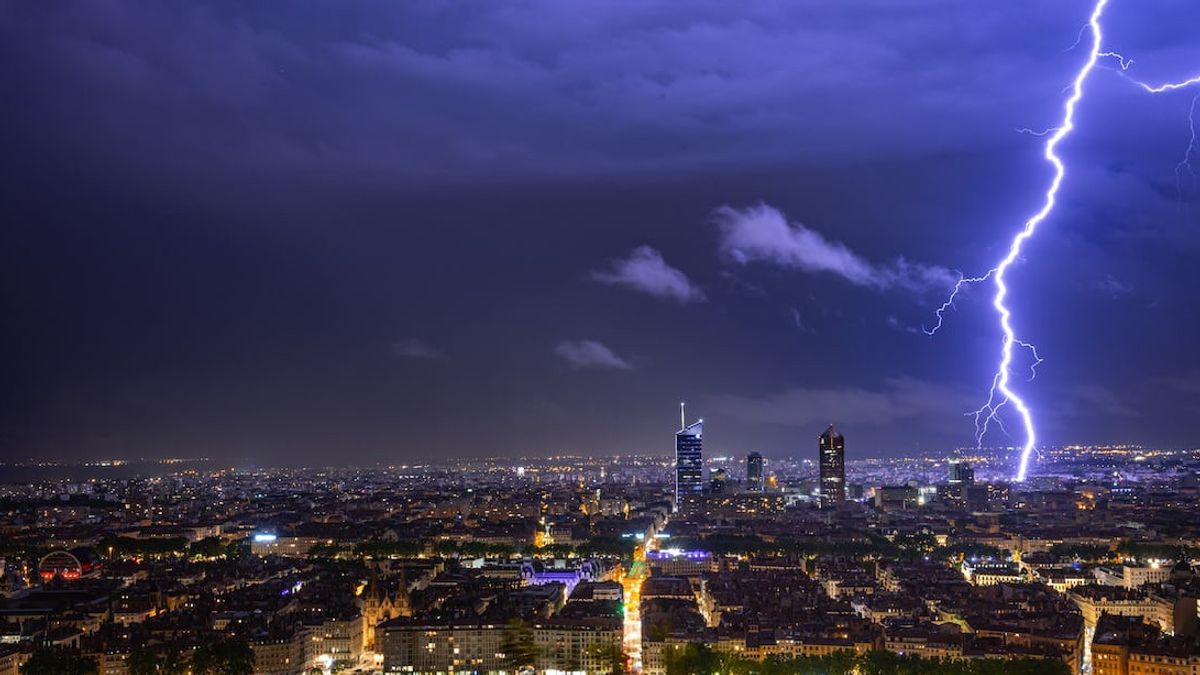JAKARTA - Scientists in France have created a way to divert lightning strikes using a super powerful laser beam. This was their first achievement in years of experimenting with laser control of the weather.
So far, the only simple lightning rod was first conceived by the American polymath Benjamin Franklin in 1749.
Lightning strikes between 40-120 times per second worldwide, killing more than 4,000 people and causing billions of dollars worth of damage each year.
A team of scientists led by physicist Aurélien Houard of the École Polytechnique in Palaiseau, France, spent time experimenting with a laser array near a 124m high telecommunication tower atop Switzerland's Säntis mountain.
The tower received over a hundred lightning strikes annually, making it a major attraction for the experiments. Between July and September last year, lasers were fired at a number of storm fronts for a total of six hours.
According to the scientists' measurements, the laser pulses affected four upward discharges, although only one occurred in conditions clear enough to be photographed using a high-speed camera.
Even so, the path of the lightning in the experiment appeared to have been diverted some 50m towards the laser beam. This system works thanks to the laser's ability to form a more convenient path for light to travel to Earth.
The refractive index of the surrounding air changes as the pulse flashes more than 1,000 times per second into a storm cloud. According to scientists, firing laser pulses ionizes air molecules to produce highly conductive plasma channels for electrical discharges to flow together.
SEE ALSO:
"[Franklin's] metal rods are used almost everywhere to protect against lightning, but the area they can protect is limited to a few meters or tens of meters," Houard said in comments reported by the Guardian.
"The hope is to extend that protection to several hundred meters if we have enough energy in the laser."
Furthermore, a low-density ionized airway is then created from air molecules that quickly heat up and disperse at supersonic speeds.
Even though the filament only lasts a few milliseconds, its conductivity compared to the surrounding air makes for a much easier path for lightning to arc.
Early indications also point to a much wider diverting range of laser lightning rods than a traditional metal rod, ostensibly covering an area about twice the width of the rod's height.
The research, published Monday in the journal Nature Photonics, appears to be suitable for use at airports and military bases.
"This work paves the way for new atmospheric ultrashort laser applications and is an important step forward in the development of laser-based lightning protection for airports, launch pads or large infrastructure," said Houard.
However, launching Popsci, Wednesday, January 18, there are some immediate drawbacks to this new system. First, the laser pulses are very bright, and could easily cause problems for passing aircraft, as they close the airspace around the experiment during their working time. So the laser direction must be carefully planned.
Then, the system's price tag is around 2 million US dollars, equivalent to IDR 30.1 billion during the five-year trial development. All of which makes it highly unlikely to see laser lightning rods over suburban homes.
The English, Chinese, Japanese, Arabic, and French versions are automatically generated by the AI. So there may still be inaccuracies in translating, please always see Indonesian as our main language. (system supported by DigitalSiber.id)


















